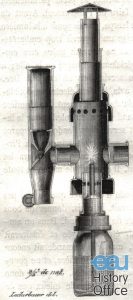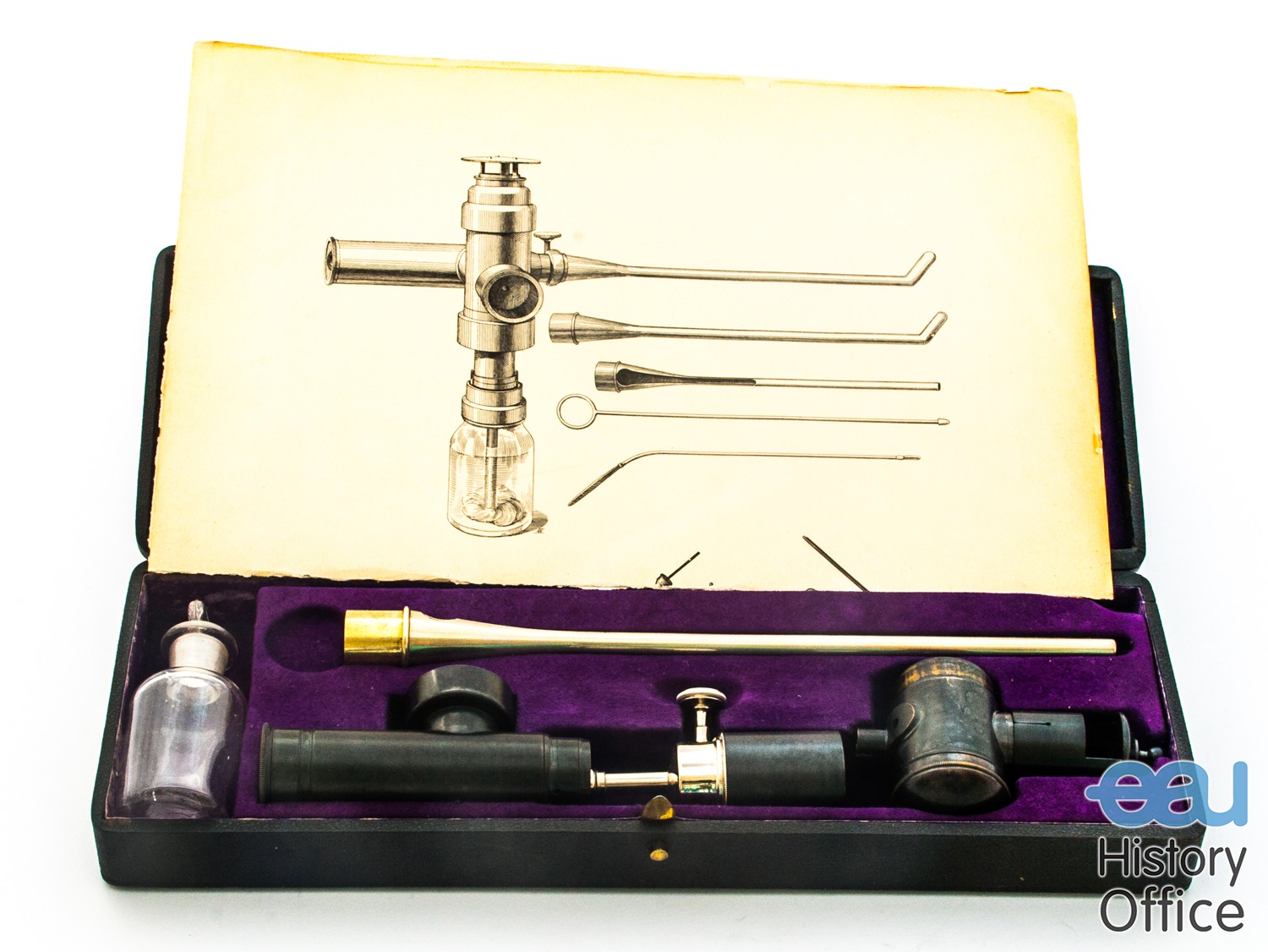The founder of endoscopy
On 29 November 1853, the French surgeon Antonin J. Desormeaux, demonstrated a new instrument which he called l’endoscope to the Académie impériale de médecine in Paris. He coined the word l’endoscopie and is known as the “Father of endoscopy”. Desormeaux’s endoscope must clearly be regarded as the successor to Bozzini’s light conductor and Ségalas’ speculum urethro-cystique.
Desormeaux improved the light source by using a gasogene mixture which generated brighter and more transparent light than regular candlelight. He was also able to reconfigure the angles used in the lens system so that the light could be concentrated more precisely to one area. By introducing all these subtle refinements, Desormeaux was among the first surgeons to utilise the endoscope not only for diagnostic but also for therapeutic procedures on living patients.
Source: Peter Paul Figdor: The Development of Endoscopy in the 19th century. Tuttlingen, 2004, pp 129.
 The endoscope and the position of the endoscope during application. In: A.J. Désormeaux, “De l’endoscope et de ses applications au diagnostic et au traitement…” From the collection of the Int. Nitze-Leiter Research Society for Endoscopy.
The endoscope and the position of the endoscope during application. In: A.J. Désormeaux, “De l’endoscope et de ses applications au diagnostic et au traitement…” From the collection of the Int. Nitze-Leiter Research Society for Endoscopy.
The most essential parts of the instrument are: a probe to let in the light and keep open all those orifices of cavities or canals to be explored, and a mirror which is perforated in the middle and placed diagonally in front of the probe to project the luminous cone parallel to its axis.
In order to increase the lighting, a plano-convexe lense is placed between the light and the perforated mirror, so that the light rays are converged on the objects situated at the end of the probe.
The choice of lighting is of utmost importance; … gazogène (a mixture of alcohol and turpentine) seems sufficient for me; the flame has a high light intensity under a small volume, and the lamp itself perfectly serves the requirements of this instrument.
Excerpt from Antonin J. Desormeaux “De l’endoscope et de ses applications au diagnostic et au traitement des affections de l’urèthre et de la vessie”. Paris 1865.

Descormeaux Endoscope, created by Charrière, Paris. From the collection of the German Society of Urology (DGU).

